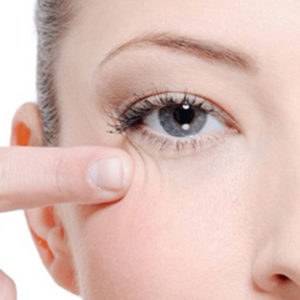Blepharoplasty in the Philippines

What is Blepharoplasty?
Indications
- Loose or sagging skin that creates folds or disturbs the natural contour of the upper eyelid, sometimes impairing vision
- Fatty deposits that appear as puffiness in the eyelids
- Bags under the eyes
- Drooping lower eyelids that reveal white below the iris
- Excess skin and fine wrinkles of the lower eyelid
Candidates for Eyelid Surgery
- Healthy individuals with no medical conditions that can impair healing
- Nonsmokers
- Individuals with a positive outlook and realistic goals
- If you have no serious eye conditions
Remember that the eyelids are part of the face. The appearance of a drooping upper lid may also be due to relaxation of the forehead skin and eyebrow. Sometimes stretching out of the upper eyelid muscle may cause a drooping eyelid. This is called eyelid ptosis and requires a different surgical treatment.
Your cosmetic surgeon will evaluate your facial anatomy thoroughly and will discuss what procedures might best remedy your concerns, for instance.
Consultation
- Your surgical goals
- Medical conditions, drug allergies, previous medical treatments and specifically any problems you have had with your eyes
- Current prescription medications, including vitamins, herbal supplements, alcohol, tobacco and drug use
- Previous surgeries
Your cosmetic surgeon will also:
- Evaluate your general health status and any pre-existing health conditions or risk factors
- Take photographs
- Discuss your blepharoplasty options
- Recommend a course of treatment
- Discuss likely outcomes of eyelid surgery and any potential risks
- Choose the type of anesthesia that will be used
Risks and Safety
You will be asked to sign consent forms to ensure that you fully understand the procedure and any risks and potential complications.
Possible eyelid surgery risks include:
- Anesthesia risks
- Swelling and bruising
- Bleeding from the incision lines
- Dryness to the eyes
- Lagophthalmos (Difficulty closing your eyes)
- Ectropion, an outward rolling of the lower eyelid
- Infection
- Temporary or even permanent change in vision, and very rare chance of blindness
- Changes in skin sensation or numbness of the eyelashes
- Persistent pain
- Possible need for revision surgery
- Unfavorable scarring
In addition, these risks and others will be fully discussed prior to your consent. It is important that you address all your questions directly with your cosmetic surgeon.
Preparation
- Get lab testing or a medical evaluation
- Take certain medications or adjust your current medications
- Stop smoking
- Avoid taking aspirin, anti-inflammatory drugs and herbal supplements as they can increase bleeding and bruising
For instance, blepharoplasty (Eyelid Surgery) is performed in an accredited office-based surgical facility, a licensed ambulatory surgical center, or a hospital. Be sure to arrange for a friend or family member to drive you to and from surgery, and to stay with you the first night following surgery.
Procedure
A blepharoplasty procedure includes the following steps:
Step 1 – Anesthesia
Firstly, medications are administered for your comfort during the surgical procedure. The choices include intravenous sedation or general anesthesia. Your doctor will recommend the best choice for you.
Step 2 – The incision
Secondly, the incision lines for blepharoplasty are designed so the resultant scars will be well concealed within the natural structures of the eyelid region. Upper eyelid can be corrected through an incision within the natural crease on the eyelid. This allows for removal or repositioning of fat deposits, tightening of muscles and removal of excess skin. Moreover, conditions of the lower eyelid may be corrected with an incision just below the lower lash line. Through this incision, excess skin in the lower eyelid is removed. Again, the excess fat can be repositioned or removed. Therefore, a transconjunctival incision, created on the inside of the lower eyelid, is an alternate technique to correct lower eyelid conditions and redistribute or remove excess fat. With this technique, no skin is removed.
Step 3 – Closing the incisions
Thirdly, and most importantly, eyelid incisions typically are closed with sutures or skin glue. Sutures are removed within one week. Your surgeon may also suggest use of a laser or chemical peel to reduce discoloration of the lower eyelids.
Step 4 – See the results
In conclusion, the results of blepharoplasty will appear gradually as swelling and bruising subside to reveal a smooth, better-defined eyelid and surrounding region, and a more alert and rejuvenated appearance.
Recovery
Initial healing may include some swelling, bruising, irritation, dry eyes and discomfort that can be controlled with medication, cold compresses and ointment. Irritation at the incision sites is also possible.
Therefore, be sure to ask your surgeon specific questions about what you can expect during your individual recovery period.
- Where will I be taken after my surgery is complete?
- What medication will I be given or prescribed after surgery?
- Will I have dressings/bandages after surgery?
- When will they be removed?
- Are stitches removed?
- When can I resume normal activity, exercise and return for follow-up care?
You must practice diligent sun protection and use darkly tinted sunglasses until the healing process is fully complete.
Results
What to Expect in Blepharoplasty
The results of blepharoplasty will be long-lasting. While there usually is little pain involved in this surgery, there can be swelling or bruising. Most patients are presentable to the public in 10-14 days. However, it may take a few months before final healing is completed.
While eyelid surgery can be expected to correct certain conditions permanently, you will continue to age naturally. For example, ongoing sun protection will help to maintain your results.
Although good results are expected from your procedure, there is no guarantee. In some situations, it may not be possible to achieve optimal results with a single surgical procedure and another surgery may be necessary.
Following your post-operative instructions is essential to the success of your surgery. It is important that the surgical incisions not be subjected to excessive force, abrasion or motion during the time of healing
